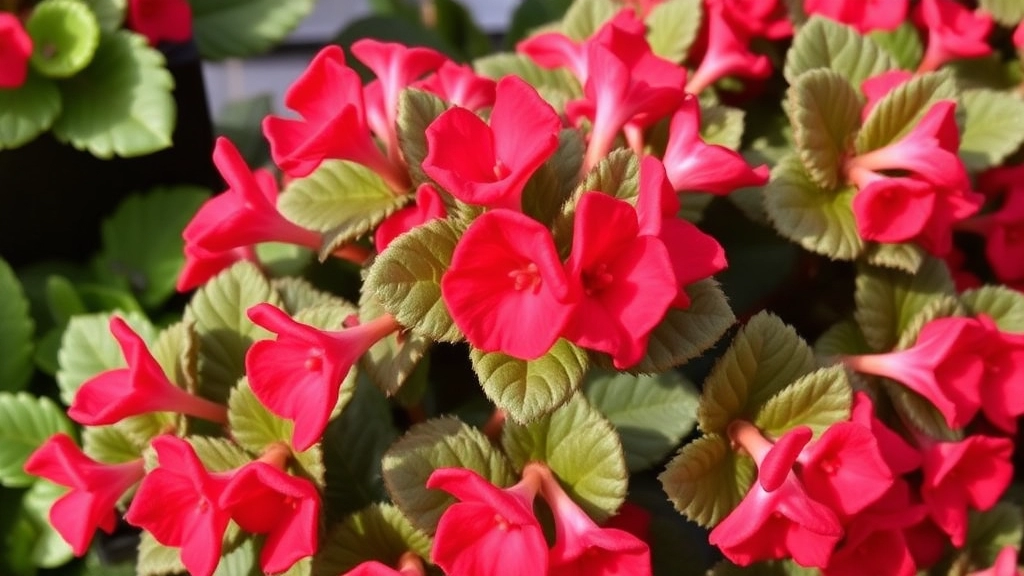Kalanchoe Red Lips: A Splash of Colour
If you’re looking to add a splash of colour to your succulent collection, the Kalanchoe Red Lips is a fantastic choice. This unique variety, known for its paddle-shaped leaves with striking red edges, is not only eye-catching but also relatively easy to care for. Whether you’re a seasoned plant enthusiast or a newbie, understanding the key characteristics and care requirements of Kalanchoe Red Lips will help you keep your plant thriving.
Care Requirements
To ensure your Kalanchoe Red Lips stays healthy, it’s crucial to provide the right light and temperature conditions. This succulent thrives in bright, indirect light and can tolerate a range of temperatures, making it versatile for both indoor and outdoor settings. Proper watering is also essential; overwatering can lead to root rot, so it’s best to let the soil dry out completely between waterings.
Tips for Thriving Plants
- Provide bright, indirect light
- Maintain a suitable temperature range
- Water only when the soil is dry
With the right care, your Kalanchoe Red Lips will become a vibrant addition to your plant family.
When considering houseplants, one often wonders which varieties stand out in both aesthetics and care requirements.
Kalanchoe ‘Red Lips’ is a striking succulent known for its vibrant, fleshy leaves that feature unique red margins, resembling luscious lips.
Key Features:
– **Foliage**: The leaves are thick and glossy, providing a stunning contrast to its bright red edges.
– **Flowers**: During its blooming season, it produces clusters of small, tubular flowers that can add a splash of colour to any space.
– **Growth Habit**: This plant typically grows upright, making it an excellent choice for tabletops or windowsills.
– **Size**: It generally reaches a height of 30-45 cm, making it manageable for indoor settings.
Kalanchoe ‘Red Lips’ not only enchants with its visual appeal but also offers a relatively low-maintenance care routine, making it perfect for both novice and experienced plant enthusiasts. For more tips on caring for Kalanchoe, check out our [post-flowering Kalanchoe care guide](https://planthq.org/postflowering-kalanchoe-care-pruning-watering-reblooming-tips/) and our [comprehensive Kalanchoe species list](https://planthq.org/comprehensive-kalanchoe-species-list-for-gardeners/).
Ideal Light and Temperature Conditions for Growth
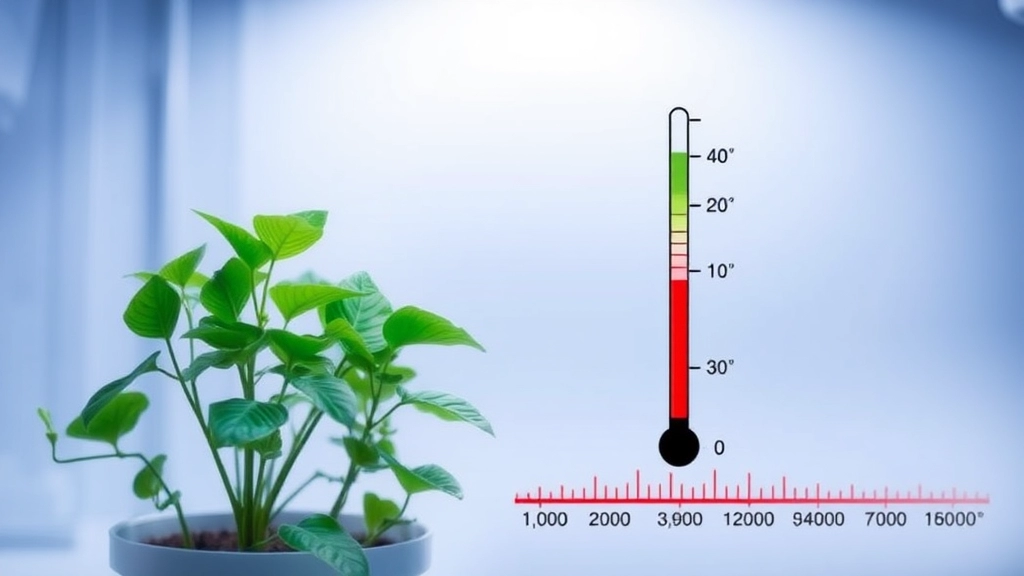
So, you’ve got your Kalanchoe ‘Red Lips’ and you’re wondering how to keep it thriving.
One of the biggest concerns is lighting.
Light Requirements:
- Bright, Indirect Light: Kalanchoe ‘Red Lips’ loves bright light but can struggle with harsh, direct sunlight.
- Filtered Sunlight: A spot near a window with sheer curtains is perfect.
- Rotate Your Plant: Every couple of weeks, give it a gentle turn to ensure even growth.
Temperature Preferences:
- Warmth is Key: Ideally, your Kalanchoe should be kept in temperatures between 18°C to 24°C (65°F to 75°F).
- Avoid Cold Drafts: Keep it away from windows or doors that open frequently in winter.
- Nighttime Chill: It can tolerate slightly cooler temperatures at night, but don’t let it drop below 10°C (50°F).
Choosing the right soil is crucial for the health of your Kalanchoe ‘Red Lips’. Many plant owners worry about whether their soil choice will support growth, drainage, and overall vitality.
For Kalanchoe, you need a well-draining potting mix. Here’s what to look for:
– **Cactus or Succulent Mix**: These blends are designed for plants that thrive in dry conditions. They typically contain sand or perlite, which improves drainage.
– **pH Level**: Aim for a slightly acidic to neutral pH (around 6.0 to 7.0). This range supports nutrient absorption.
If you prefer to mix your own, here’s a simple recipe:
– 50% potting soil
– 25% perlite or pumice
– 25% coarse sand
This combination will ensure that your Kalanchoe ‘Red Lips’ has the aeration and moisture retention it needs without becoming waterlogged.
Don’t forget about the pot! Choose one with drainage holes to prevent standing water. Terracotta pots are a great option as they allow for evaporation, keeping the soil drier.
In summary, the best soil and potting mix for your Kalanchoe ‘Red Lips’ should be well-draining and slightly acidic. For more detailed guidance, you can check out [essential Kalanchoe care tips for summer success](https://planthq.org/essential-kalanchoe-care-tips-for-summer-success/) and learn [how to care for a Kalanchoe succulent](https://planthq.org/how-to-care-for-a-kalanchoe-succulent-expert-tips/).
Watering Schedule: How to Avoid Overwatering
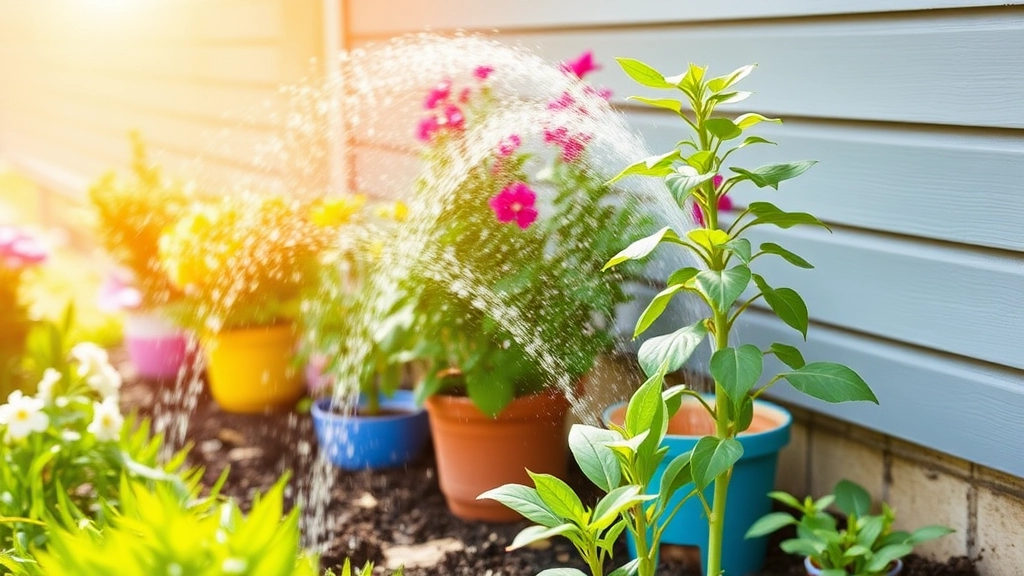
As we dive deeper into the care of Kalanchoe ‘Red Lips’, understanding the watering schedule is crucial for maintaining a healthy plant. Many plant enthusiasts struggle with overwatering, which can lead to root rot and other issues. So, how do you strike the right balance?
Key Tips for Watering Kalanchoe ‘Red Lips’
- Check the Soil Moisture:
Before watering, stick your finger about an inch into the soil. If it feels dry, it’s time to water. If it’s still moist, hold off for a few more days. - Water Thoroughly:
When you do water, ensure you soak the soil thoroughly. This encourages deep root growth. - Use Well-Draining Pots:
Ensure your pot has drainage holes. This allows excess water to escape, preventing soggy soil. - Consider the Season:
In the summer, Kalanchoe may need more frequent watering due to increased evaporation. In winter, reduce watering as the plant enters a dormant phase. - Signs of Overwatering:
Yellowing leaves and a mushy stem are clear indicators that you may be giving your plant too much water.
Seasonal Care Tips: Summer and Winter Maintenance
As we delve into the seasonal care of Kalanchoe ‘Red Lips’, it’s essential to understand how different seasons impact its growth and health.
Summer Care
During the summer months, your Kalanchoe ‘Red Lips’ thrives with the right balance of light, heat, and moisture. Here are some key points to consider:
- Light Exposure: Ensure your plant receives bright, indirect sunlight. Direct sunlight can scorch its leaves.
- Temperature: Ideal temperatures range between 20°C to 30°C. Avoid exposing your plant to extreme heat or cold drafts.
- Watering: Increase watering frequency, but allow the soil to dry out completely between sessions. This prevents root rot.
- Humidity: Keep humidity levels moderate. Too much moisture can lead to fungal issues.
- Fertilizing: Use a balanced, diluted liquid fertiliser every 4-6 weeks to promote blooming.
Example: I remember when I first noticed my Kalanchoe ‘Red Lips’ blooming beautifully in summer. It was a joy to see those vibrant red lips flourish, thanks to the right care.
Winter Care
As winter approaches, your Kalanchoe ‘Red Lips’ requires a shift in care routine to ensure it remains healthy.
- Light Exposure: Position your plant in a bright location, as daylight hours shorten. Supplement with grow lights if necessary.
- Temperature: Keep temperatures between 15°C to 20°C. Avoid placing it near cold windows or heating vents.
- Watering: Reduce watering frequency. Allow the soil to dry out more between waterings to prevent root rot in cooler temperatures.
- Humidity: Lower humidity levels are generally acceptable, but avoid overly dry conditions.
- Fertilizing: Hold off on fertilising during winter, as the plant enters a dormant phase.
Tip: I once neglected to adjust my watering schedule in winter, leading to root rot. Learning to adapt to seasonal changes has since been crucial for my plant’s health.
For more detailed care instructions, you can refer to the Ultimate Guide to Flowering Kalanchoe Care. Additionally, if you are interested in exploring different varieties, check out the Top Kalanchoe Mother of Thousands Varieties and Care Tips.
Propagation Techniques: Cuttings and Offsets
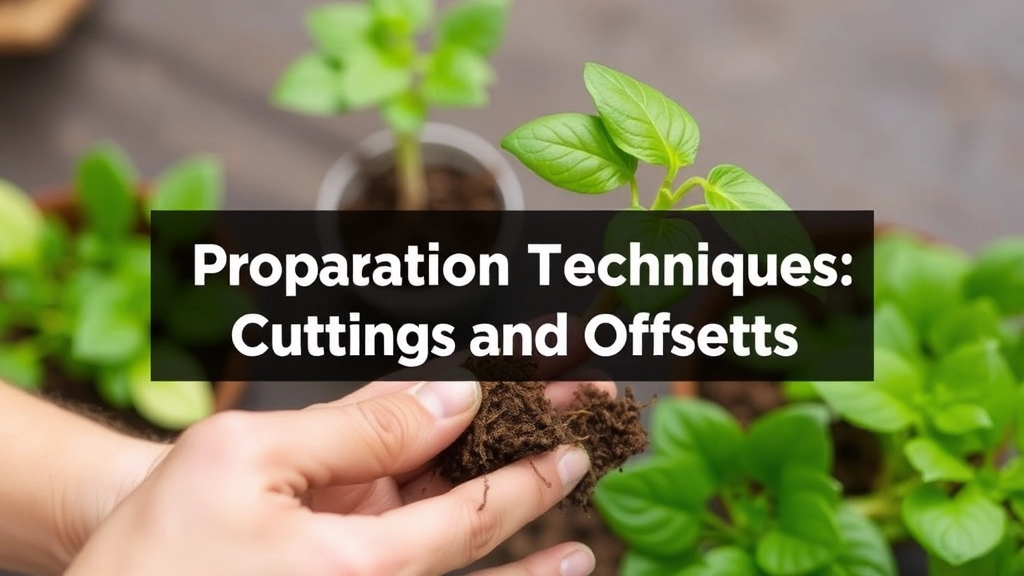
So, you’ve got a Kalanchoe ‘Red Lips’ and you’re thinking about expanding your collection? Great idea! Propagating this stunning succulent is not just satisfying; it’s a fun way to share the love with friends or even to fill your home with more of those vibrant, red-lipped leaves.
Propagation Methods
There are two main methods for propagating Kalanchoe ‘Red Lips’: cuttings and offsets. Let’s break these down.
1. Cuttings
- Select a Healthy Stem: Look for a robust stem that’s at least a few inches long.
- Make the Cut: Using clean, sharp scissors or a knife, snip off the stem just below a leaf node.
- Let it Callous: Place the cutting in a dry spot for a couple of days. This helps prevent rot when you plant it.
- Plant: Stick the cutting in well-draining soil, about an inch deep.
- Water Sparingly: Give it a light misting, but avoid soaking.
2. Offsets
- Identify Offsets: These are little baby plants that grow around the base of the main plant.
- Gently Remove: Twist or cut the offset away from the main plant, ensuring you get some roots.
- Plant: Just like with cuttings, place it in well-draining soil.
- Water: Again, keep it light.
Tips for Successful Propagation
- Timing Matters: Spring or early summer is the best time to propagate. The plant is in its growth phase, making it more likely to thrive.
- Humidity Helps: If you can, place a plastic bag over the cutting for a few days to create a mini greenhouse effect. Just remember to remove it occasionally for fresh air!
- Patience is Key: It may take a few weeks for roots to develop, so don’t rush it.
Common Pests and How to Manage Them
As we delve deeper into caring for your Kalanchoe ‘Red Lips’, it’s crucial to address one of the most common concerns: pests.
Identifying Common Pests
Kalanchoe plants can attract a variety of pests that can hinder their growth and overall health. Here are the most common culprits:
- Aphids: Tiny, soft-bodied insects that suck sap from your plant.
- Mealybugs: White, cottony pests that often cluster in leaf joints.
- Spider Mites: Microscopic pests that create fine webs and cause leaf discoloration.
- Scale Insects: Small, brown bumps on stems and leaves that can be hard to spot.
Effective Pest Management Strategies
To keep your Kalanchoe ‘Red Lips’ thriving, here are some practical pest management tips:
- Regular Inspections: Check your plant weekly for any signs of pests.
- Natural Remedies: Use insecticidal soap or neem oil to treat infestations.
- Isolation: If you spot pests, isolate the affected plant to prevent spreading.
- Cleaning: Wipe down leaves with a damp cloth to remove pests and dust.
- Encourage Beneficial Insects: Ladybugs and lacewings can help control pest populations.
Prevention is Key
Keeping your Kalanchoe healthy is the best way to prevent pest infestations. Ensure proper light, temperature, and watering conditions to strengthen your plant’s resilience. For more detailed care tips, check out our summer care tips for a healthy Kalanchoe plant. Additionally, if you’re interested in the various species of Kalanchoe you can grow, explore our guide to different Kalanchoe species.
Fertilizing Kalanchoe ‘Red Lips’ for Optimal Growth
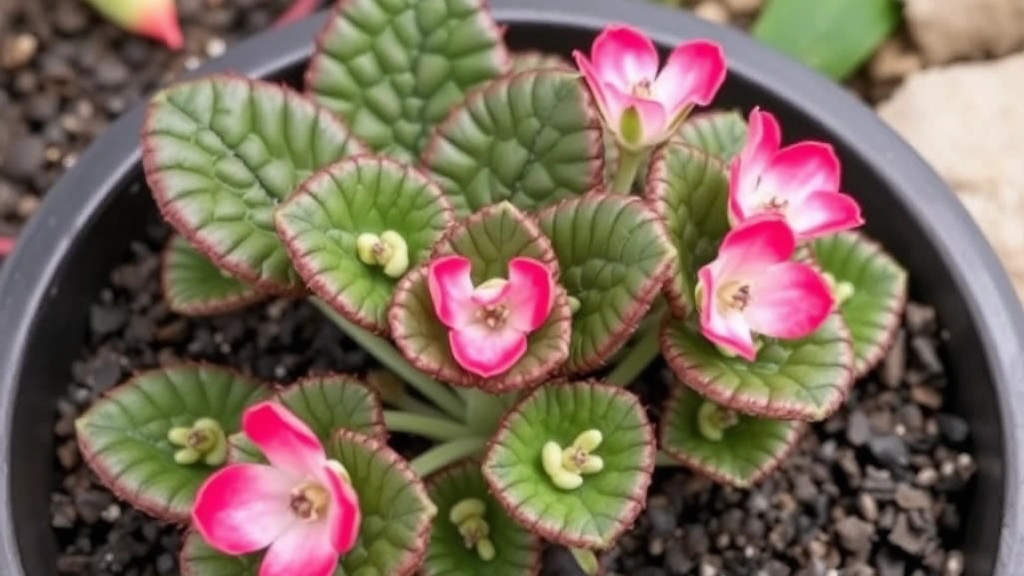
So, you’ve got your Kalanchoe ‘Red Lips’ thriving, but how do you give it that extra boost?
Fertilizing is key to keeping your plant vibrant and blooming.
When to Fertilize
- Growing Season: During spring and summer, your Kalanchoe is in its active growth phase. This is the time to fertilize.
- Frequency: Every 4-6 weeks is ideal.
What to Use
- Balanced Fertilizer: Look for a 20-20-20 liquid fertilizer. This means equal parts nitrogen, phosphorus, and potassium.
- Dilution: Always dilute it to half strength. Too much can harm your plant.
Application Tips
- Water First: Before applying fertilizer, give your plant a good drink. This helps prevent root burn.
- Even Distribution: Pour the diluted fertilizer around the base of the plant, avoiding the leaves.
Signs Your Plant Needs Fertilizer
- Slow Growth: If your Kalanchoe seems stagnant, it might be time to feed it.
- Pale Leaves: Yellowing can indicate a nutrient deficiency.
Remember, less is often more. Over-fertilizing can lead to salt buildup, which can harm your plant.
Seasonal Adjustments
- Winter Care: During the colder months, cut back on fertilizing. Your plant will be in dormancy and won’t need as many nutrients.
Pruning and Shaping Your Kalanchoe Plant
As we delve into the care of Kalanchoe ‘Red Lips’, it’s essential to consider how proper pruning can enhance its growth and appearance.
Pruning is not just about snipping away dead leaves; it’s a vital practice that encourages healthy growth and a fuller shape.
Why Prune Your Kalanchoe?
- Promotes Air Circulation: Reduces the risk of fungal diseases.
- Encourages New Growth: Helps the plant to focus energy on producing new leaves and flowers.
- Maintains Shape: Keeps the plant looking tidy and aesthetically pleasing.
When to Prune
- Post-Bloom: After flowering, is the ideal time to prune.
- Spring: A good season to shape the plant as it enters its active growth phase.
How to Prune
- Gather Your Tools: Use clean, sharp scissors or pruning shears.
- Remove Dead or Yellow Leaves: Start by cutting away any unhealthy foliage.
- Shape the Plant: Trim back leggy stems to encourage bushiness.
- Cut Above a Node: Always prune just above a leaf node to stimulate new growth.
Tips for Effective Pruning
- Don’t Overdo It: Aim to remove no more than 20-30% of the plant at once.
- Observe the Plant: Take note of its natural shape to guide your cuts.
- Clean Your Tools: Prevent disease by sterilising your tools before and after use.
By regularly pruning your Kalanchoe ‘Red Lips’, you’ll not only improve its health but also enhance its vibrant appearance. For more detailed care tips, check out our Optimal Care for Kalanchoe Blossfeldiana Growth and learn How to Propagate Kalanchoe Blossfeldiana Cuttings.
Signs of Stress: Etiolation, Rot, and Other Issues
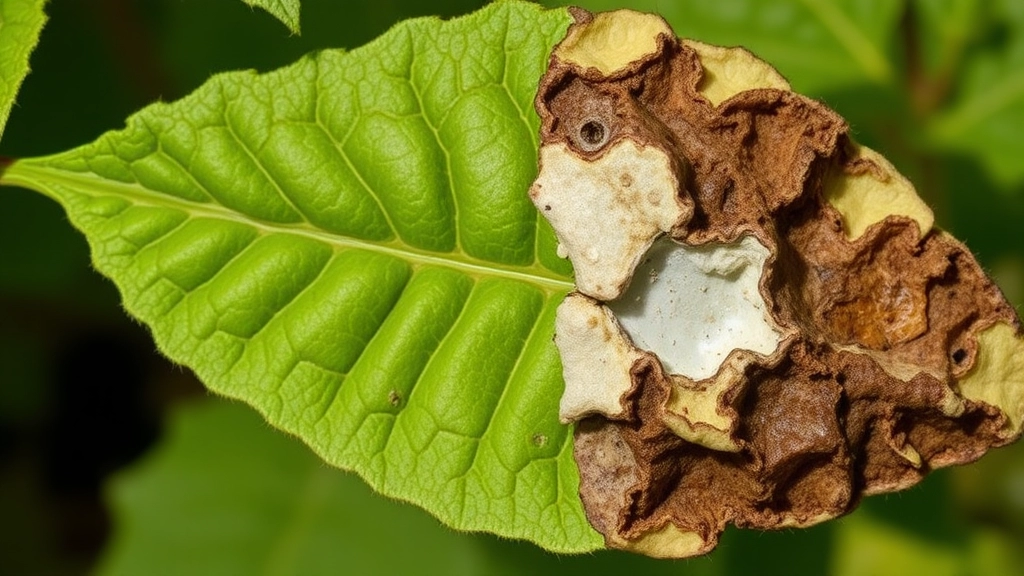
Have you ever noticed your Kalanchoe ‘Red Lips’ looking a bit off? It’s a common worry for plant lovers, and knowing the signs of stress can save your plant from serious issues.
Common Signs of Stress
- Etiolation:
- This happens when your plant stretches towards the light.
- Look for long, leggy stems and sparse leaves.
- If your Kalanchoe is reaching for the sun, it’s time to adjust its light conditions.
- Rot:
- Overwatering can lead to root rot, a serious condition.
- Check for mushy stems or leaves turning yellow.
- If you see these signs, reduce watering immediately and consider repotting.
- Leaf Drop:
- If leaves are falling off, it could be a sign of stress.
- This might happen due to sudden temperature changes or inconsistent watering.
- Keep an eye on your watering schedule and temperature stability.
- Discolouration:
- Leaves turning brown or black? That’s not good!
- This could indicate sunburn or overwatering.
- Try moving your plant to a shadier spot or adjusting your watering routine.
- Pests:
- Sometimes, stress is caused by unwelcome guests.
- Look out for tiny bugs or webs, which can sap your plant’s strength.
- Regularly inspect your Kalanchoe and treat any infestations promptly.
Quick Tips for Recovery
- Adjust Light: Move your plant to a brighter spot if it’s etiolating.
- Check Watering: Ensure you’re not overwatering; let the soil dry out between sessions.
- Repot if Necessary: If rot is suspected, repot in fresh, dry soil.
- Pest Control: Use neem oil or insecticidal soap for any pest issues.
Where to Buy and How to Choose a Healthy Kalanchoe ‘Red Lips’
When it comes to acquiring a Kalanchoe ‘Red Lips’, many of us wonder: where can I find a healthy plant?
Where to Buy
- Local Nurseries:
- Visiting a local nursery allows you to inspect the plant firsthand.
- You can ask staff for care tips and even get a sense of the plant’s growing conditions.
- Garden Centres:
- These often have a variety of succulents, including Kalanchoe.
- Look for reputable centres with a good selection.
- Online Retailers:
- Websites like Amazon or specialist plant shops can be convenient.
- Ensure they have a solid return policy in case the plant arrives damaged.
- Plant Shows and Expos:
- These events often feature unique varieties and knowledgeable sellers.
- You might discover a rare find while chatting with fellow enthusiasts.
Choosing a Healthy Plant
When selecting your Kalanchoe ‘Red Lips’, keep these key points in mind:
FAQs about Kalanchoe ‘Red Lips’
What kind of light does Kalanchoe ‘Red Lips’ need?
Kalanchoe ‘Red Lips’ thrives in bright, indirect light. It can tolerate filtered sunlight, making a spot near a window with sheer curtains ideal. Remember to rotate your plant every couple of weeks for even growth.
What is the ideal temperature for Kalanchoe ‘Red Lips’?
This plant prefers temperatures between 18°C to 24°C (65°F to 75°F). Avoid cold drafts and ensure the temperature doesn’t drop below 10°C (50°F) at night.
How should I water my Kalanchoe ‘Red Lips’?
Check the soil moisture before watering. If the top inch of soil is dry, it’s time to water. Ensure you water thoroughly and use well-draining pots to prevent overwatering, which can lead to root rot.
How can I propagate Kalanchoe ‘Red Lips’?
You can propagate Kalanchoe ‘Red Lips’ through cuttings or offsets. For cuttings, select a healthy stem, let it callous, and plant it in well-draining soil. For offsets, gently remove the baby plants from the base and plant them similarly.
When and how should I fertilize Kalanchoe ‘Red Lips’?
Fertilize during the growing season (spring and summer) every 4-6 weeks using a balanced 20-20-20 liquid fertilizer diluted to half strength. Water the plant first to prevent root burn and apply the fertilizer around the base of the plant.
What are the signs of stress in Kalanchoe ‘Red Lips’?
Common signs include etiolation (stretching towards light), rot (mushy stems or yellow leaves), leaf drop, discolouration (brown or black leaves), and pests. Adjust light, check watering, repot if necessary, and treat pests promptly to help your plant recover.
How can I avoid overwatering my Kalanchoe ‘Red Lips’?
Ensure the soil dries out between watering sessions. Use pots with drainage holes and reduce watering during the plant’s dormant phase in winter. Signs of overwatering include yellowing leaves and a mushy stem.
What should I do if my Kalanchoe ‘Red Lips’ gets pests?
Inspect your plant regularly for tiny bugs or webs. If you find pests, treat the plant with neem oil or insecticidal soap promptly to prevent further damage.
Can I fertilize Kalanchoe ‘Red Lips’ in winter?
It’s best to cut back on fertilizing during winter as the plant enters dormancy and requires fewer nutrients. Over-fertilizing can lead to salt buildup, which can harm your plant.
Why are my Kalanchoe ‘Red Lips’ leaves turning yellow?
Yellow leaves can be a sign of overwatering or a nutrient deficiency. Check your watering schedule and consider fertilizing the plant if it’s in its growing season.
References
-
How to Grow Kalanchoe Succulents Indoors
-
Kalanchoe Plant Care Indoors
-
Kalanchoe: How to Grow and Care for Kalanchoe Plants
